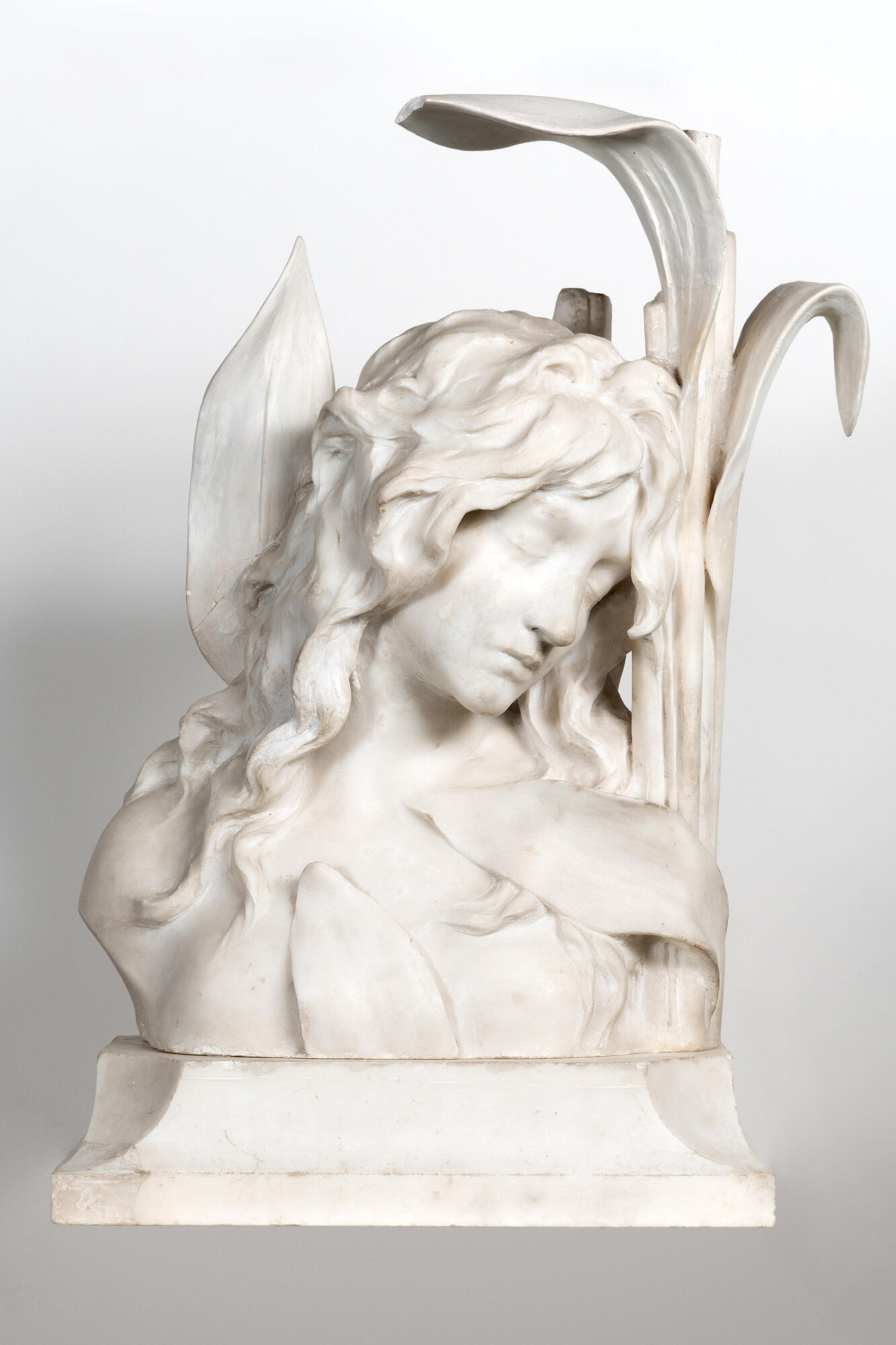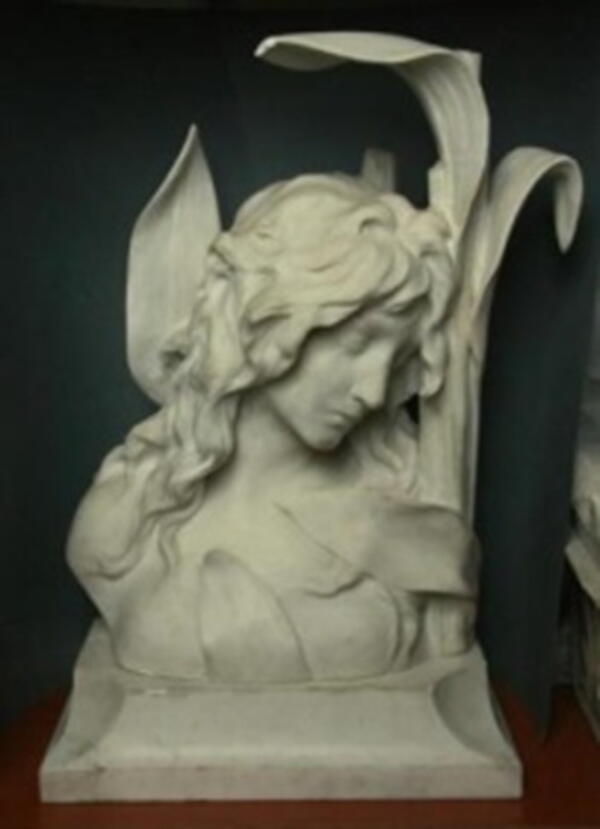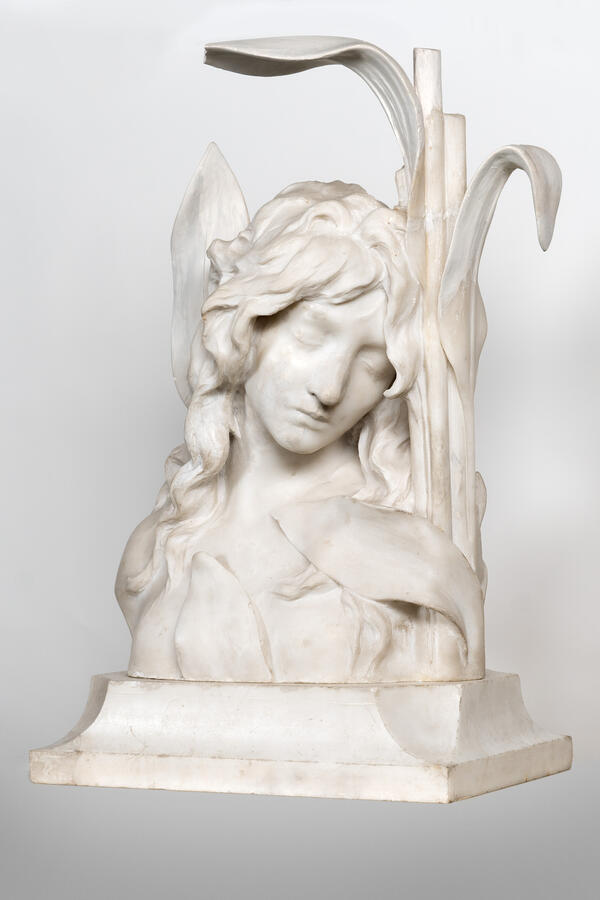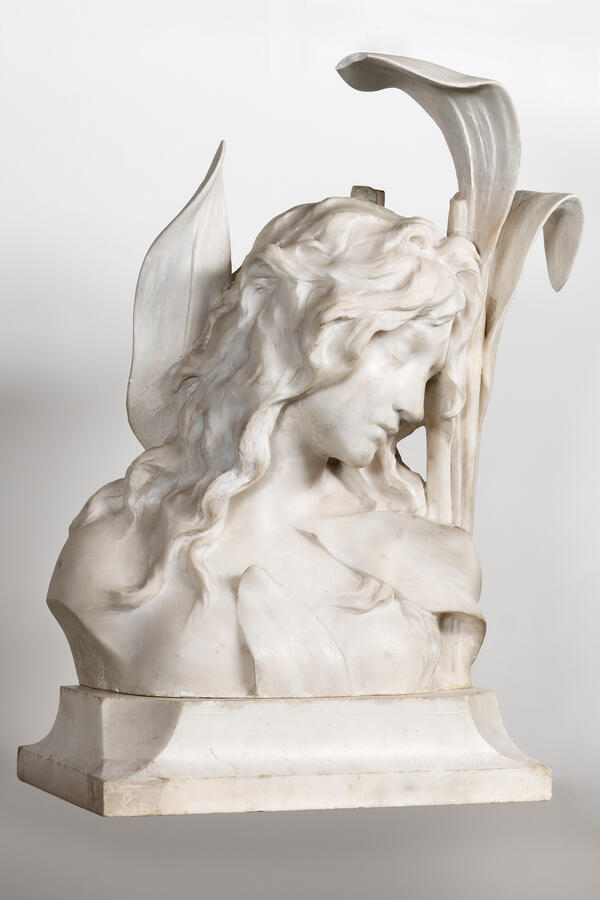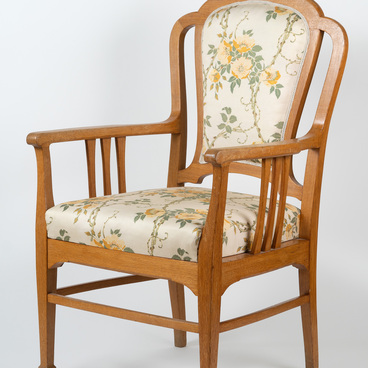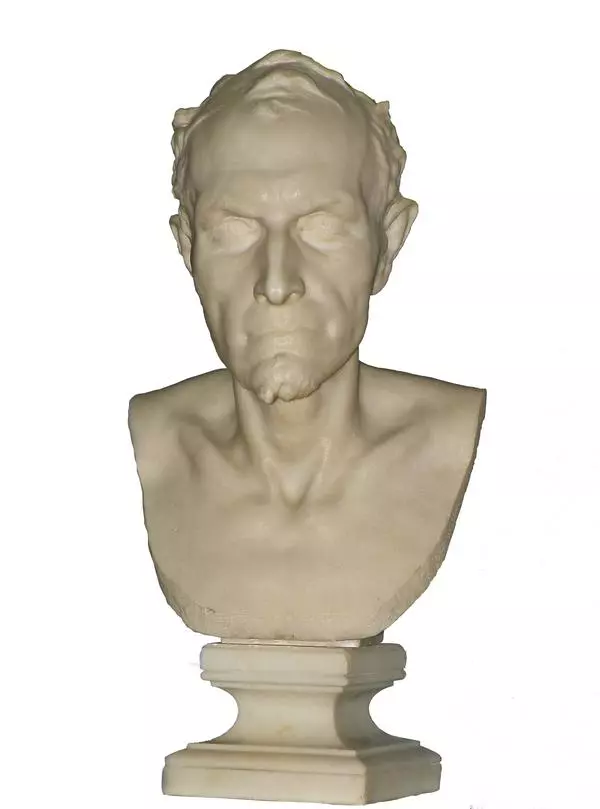The marble bust “Undine” is the work of the Russian sculptor Mark Antokolsky, Member of the Imperial Academy of Arts. The bust depicts the head of a mythical creature, undine, with loose hair, bent to the left shoulder. On the right and behind the bust are reed leaves.
Undines in mythology are spirits of water, humanoid beings who lure men into the water. They are the maidens who come to the surface by moonlight, sing and dance in a ring, bewitching men with their songs and luring them to the bottom of the sea. When a man gives in to their allure, they either kill him or make him their lover. According to ancient Scandinavian beliefs a man once caught by undines, did not return to earth. Sometimes undines intermarried with people on earth because they received an immortal human soul. Writers and especially poets of the Romantic school, painters and sculptors loved to use the images of undines in their works.
“Undine” is one of the sculptor’s later works.
Mark Antokolsky came from a poor family and in his youth was apprenticed to woodcarving by his parents. The wife of the governor-general of Vilnius, patroness of the arts Anastasia Alexandrovna Nazimova, heard about the talented apprentice. Thanks to her intercession the future sculptor was admitted as a non-matriculated student to the Academy of Arts. The first major work by Antokolsky was a statue of “Ivan the Terrible” (1870). Grand Duchess Maria Nikolaevna, who was the patron of the Academy of Arts, was delighted with the sculpture and told Emperor Alexander II about the work of the young artist. The statue made a huge impression on the tsar and he bought it for the Hermitage for 8,000 rubles.
After graduating from the Academy, the sculptor went to Europe. In Rome Antokolsky worked on a sculpture of Peter I, conceived back in Russia. He sent this work to St. Petersburg. At the same time, he was elected a corresponding member of the Paris Academy.
The sculpture of Undine adorned the Maple Drawing Room of Empress Alexandra Feodorovna in the Alexander Palace until 1941.
Undines in mythology are spirits of water, humanoid beings who lure men into the water. They are the maidens who come to the surface by moonlight, sing and dance in a ring, bewitching men with their songs and luring them to the bottom of the sea. When a man gives in to their allure, they either kill him or make him their lover. According to ancient Scandinavian beliefs a man once caught by undines, did not return to earth. Sometimes undines intermarried with people on earth because they received an immortal human soul. Writers and especially poets of the Romantic school, painters and sculptors loved to use the images of undines in their works.
“Undine” is one of the sculptor’s later works.
Mark Antokolsky came from a poor family and in his youth was apprenticed to woodcarving by his parents. The wife of the governor-general of Vilnius, patroness of the arts Anastasia Alexandrovna Nazimova, heard about the talented apprentice. Thanks to her intercession the future sculptor was admitted as a non-matriculated student to the Academy of Arts. The first major work by Antokolsky was a statue of “Ivan the Terrible” (1870). Grand Duchess Maria Nikolaevna, who was the patron of the Academy of Arts, was delighted with the sculpture and told Emperor Alexander II about the work of the young artist. The statue made a huge impression on the tsar and he bought it for the Hermitage for 8,000 rubles.
After graduating from the Academy, the sculptor went to Europe. In Rome Antokolsky worked on a sculpture of Peter I, conceived back in Russia. He sent this work to St. Petersburg. At the same time, he was elected a corresponding member of the Paris Academy.
The sculpture of Undine adorned the Maple Drawing Room of Empress Alexandra Feodorovna in the Alexander Palace until 1941.
